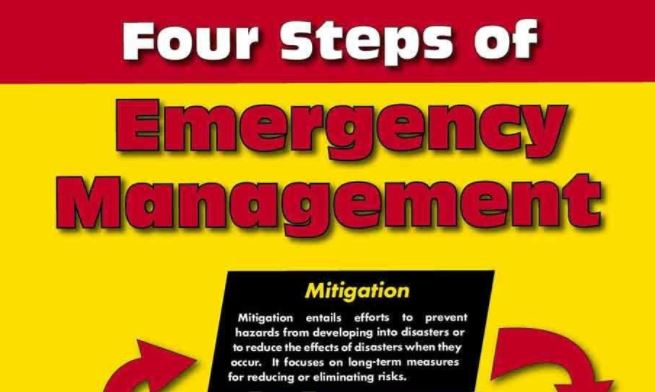
What is Your Emergency Response Plan this Severe Weather Season?

Waiting until an emergency happens to start thinking about what to do is like walking around with a blindfold over your eyes.
Waiting until an emergency happens to start thinking about what to do is like walking around with a blindfold over your eyes. Safety posters are a necessary way to make sure you and your employees are prepared for any sort of workplace disaster.
April starts severe weather season for most of the United States, however, dangerous weather – like tornadoes can occur any time of the year. Mother Nature does not discriminate when it comes to the weather – she makes sure to include just about all 50 states in severe weather season.
On average about 1000 recorded tornados hit every year. Annually tornadoes cause 1,500 injuries and 80 deaths are directly attributed to tornadoes, only. But severe weather can pour in virtually any emergencies.
The best way to protect yourself and your coworkers during an emergency are to have an emergency action plan (EAP) in place. An EAP is a written document required by OSHA standards (29 CFR 1910.38(c)) to facilitate and organize the employer and employee actions during workplace emergencies.
Without a well-developed, comprehensive plan and proper EAP training, your employees will not know what to and they will be at a greater risk of serious injuries.
OSHA requires nearly all employers with at least 11 employees to have a written, comprehensive EAP. If you have less than 11 employees in your workplace, per OSHA, you’re permitted to communicate your plans orally.
What are the minimum requirements for an emergency action plan?
- Procedure for reporting fires and other emergencies – procedures for reporting emergencies such as dialing 911, an internal emergency number, or pulling a manual fire alarm but there are many other possibilities.
- Evacuation procedures and emergency escape route assignments – Ensure employees understand who is authorized to order an evacuation, under what conditions an evacuation would be necessary, how to evacuate, and what routes to take. Exit diagrams are typically used to identify the escape routes to be followed by employees from each specific facility location.
- Procedures for employees who remain to operate critical plant operations before they evacuate – Employees may be required to operate fire extinguishers or shut down gas and/or electrical systems and other special equipment that could be damaged if left operating or create additional hazards to emergency responders (such as releasing hazardous materials).
- Accounting for all employees after an emergency evacuation has been completed – Procedures to account for employees after the evacuation to ensure that everyone got out may include designating employees to sweep areas, checking offices and restrooms before being the last to leave a workplace or conducting a roll call in the assembly area. Many employers designate an “evacuation warden” to assist others in an evacuation and to account for personnel.
- Rescue and medical duties for employees performing them – Most small organizations rely on local public resources such as the local fire department or hospital to provide these services.
- Names or job titles of persons who can be contacted – Names, titles, departments, and telephone numbers of employees who can be contacted for additional information and/or explanation of their duties under the plan.
Completing an EAP is not enough to ensure the safety of your employees. When an evacuation is necessary, you will need responsible, trained individuals who can supervise and coordinate activities to ensure a safe and successful evacuation. Additionally, have yearly drills to master your emergency plan.
Place safety posters around your facility to keep others safe and informed.

